Deciding on a Machu Picchu trip to explore this ancient wonder is a choice no one has ever regretted. The mere words Machu Picchu and the Inca Trail have a remarkable ability to conjure up mystic adventure, images of lush forests and beasts, and an ancient civilization.
There are some things you need to know before you go so we have all the information you will require as first-timers to Machu Picchu right here.
Where is Machu Picchu?
You will find the sprawling Inca citadel in Peru, high in the Andes Mountains of South America. Shrouded in mist and surrounded by lush vegetation and steep, dramatic escarpments, it’s one of the most famous and breathtaking archaeological sites in the world and will literally take you centuries back in time.
History of Machu Picchu
The citadel remained unknown to the outside world until American historian Hiram Bingham brought it to international attention in 1911.
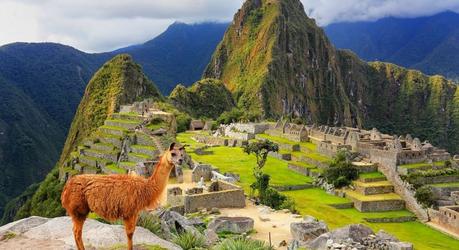
This ancient city of the Inca people was hidden from the conquering Spaniards for fear of destruction and practically forgotten until the early part of the 20th century. The Incan farming region of the Sacred Valley is home to Machu Picchu, and first-time travelers can expect a wonderfully interpretive introduction to what was once the largest empire in pre-Columbian America. Built in the 15th century, the city ruins are renowned for its sophisticated dry-stone walls that fuse huge blocks without the use of mortar, creating intriguing buildings with mysterious astronomical alignments.
Most archaeologists agree that this ancient structure was constructed as a royal estate for the Inca emperor Pachacuti around 1450 and it is easily the most familiar icon of Inca civilization. It was abandoned completely a century later at the time of the Spanish Conquest. The citadel remained unknown to the outside world until American historian Hiram Bingham brought it to international attention in 1911. UNESCO designated Machu Picchu a World Heritage site in 1983, describing it as “an absolute masterpiece of architecture and a unique testimony to the Inca civilization.”
Best time to visit Machu Picchu
Machu Picchu has wet and dry seasons, with the majority of annual rain falling from October through to April. The best time to visit Machu Picchu is in the dry season, the best months being May and early June to steer clear of the majority of the relentless crowds. Weather-wise, May to September are considered good months for visiting Machu Picchu on vacation but you would do well to avoid the crowded peak season between late June and early July; the heat is stifling and hotels and services are more expensive.
The rainy season usually begins in mid-December and lasts until the end of March or beginning of April.
February and March are not the best months to visit Machu Picchu as they get the most rain and it is also when the most mudslides occur.
Read more about the best time to visit Peru.
How to get to Machu Picchu
You can reach Machu Picchu either by train or bus or both.
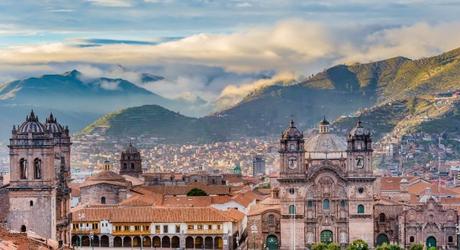 Plaza de armas, Cusco
Plaza de armas, Cusco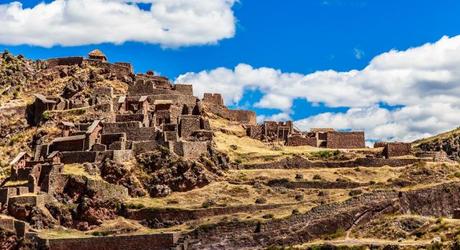 Ruins at Pisac
Ruins at Pisac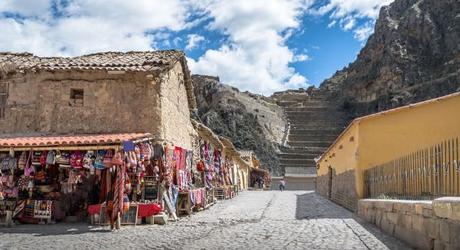 Ollantaytambo village
Ollantaytambo village
There is a reason this is a bucket list experience! It is important to note that Cusco, the Sacred Valley of the Incas and Machu Picchu are regarded as a circuit. Visitors usually fly into Cusco and from there they go to the Sacred Valley of the Incas (the region between Cusco and Machu Picchu), and then Machu Picchu. The Sacred Valley is the river valley of the Urubamba River and it encompasses the heartland of what was once the Inca Empire. The main cities in the Sacred Valley are Pisac, Urubamba and Ollantaytambo.
You can reach Machu Picchu either by train or bus or both. Trains depart from Poroy Station, which is a 20-minute drive from Cusco, and from Ollantaytambo station in the Sacred Valley. You have a few options here, depending on your taste and budget.
The Belmond Hiram Bingham train is the most luxurious (and expensive), modeled on the Pullman cars of the 1920s. The route takes you directly from Poroy Station to Machu Picchu in elegant luxury on a spectacular journey lasting three hours and 50 minutes with excellent cuisine and wines.
The PeruRail Sacred Valley train is also inspired by the elegance of the 1920s. The route takes you from Urubamba to Machu Picchu and includes a complimentary welcome beverage, a 3-course gourmet lunch and dinner.
We would suggest the PeruRail Vistadome train for you. The panoramic windows located beside and above your seat will bring you the closest to the incredible surrounding views. The trains leaves from Poroy , Ollantaytambo and Urubamba stations to Machu Picchu. The journey from Ollantaytambo station to Machu Picchu takes one hour and 40 minutes and return trips on the Vistadome offer an on-board fashion show, featuring the area’s exclusive baby alpaca wool collection, all available for sale. As an added bonus, you can enjoy live dances inspired by the ancient cultures of the Andes. The trip also includes a traditional snack and non-alcoholic beverages.
A more modest option is the PeruRail Expedition train which travels from Poroy and Ollantaytambo to Machu Picchu. The fare does not include any frills or meals but will still get you there in comfort with excellent service.
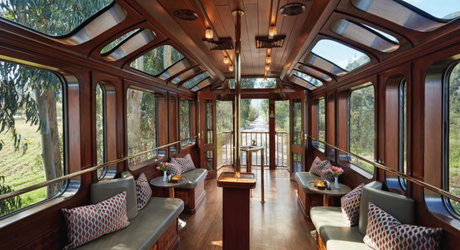 Belmond Hiram Bingham Train
Belmond Hiram Bingham Train PeruRail Sacred Valley Train
PeruRail Sacred Valley Train PeruRail Vistadome train
PeruRail Vistadome train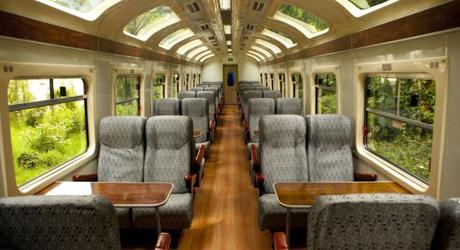 PeruRail Expedition Train
PeruRail Expedition Train
Comparison between the three trains
For a first time visitor to Machu Picchu, we suggest you immerse yourself in the full experience offered by the Inca Trail.
During the rainy season, between January 2 and and April 30, PeruRail operates their bi-modal service that combines bus and train travel, departing and returning to Cusco City. During this period, passengers using the Vistadome and Expedition bi-modal services, board a private bus at Wanchaq Station, five minutes away from Cusco, and arrive at Ollantaytambo Station. From here, passengers board the train and head to Machu Picchu Station. The return journey is the same in reverse. Your Travel Consultant will be happy to provide additional information and plan the best route for your convenience.
Passengers using the Belmond Hiram Bingham bi-modal service board a private bus, also at Wanchaq Station, and arrive at the Belmond Hotel Rio Sagrado. From the hotel, you will join the Belmond Hiram Bingham train for the journey to Machu Picchu Station. On the return leg, passengers are dropped off at their accommodation. Please get in touch with us for additional details.
However, for a first time visitor to Machu Picchu, we seriously suggest you immerse yourself in the full experience which of course means doing the Inca Trail!
Inca Trail options
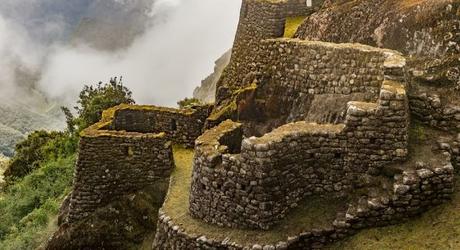 Runturakay - a ruin on the Inca Trail, Machu Picchu
Runturakay - a ruin on the Inca Trail, Machu Picchu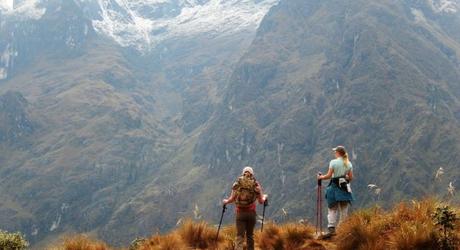 Inca Trail to Machu Picchu
Inca Trail to Machu Picchu Scenery along the train journey from Cusco to Machu Picchu aboard the Vistadome Train
Scenery along the train journey from Cusco to Machu Picchu aboard the Vistadome Train
Choose from three options for the Inca Trails, which are the traditional Inca Trail in two version. It is also the most well-known. The original one is the four-day Inca trail which can start either in Cusco or the Sacred Valley with either the Vistadome or Expedition train. The short version is the two-day Inca trail and it can start in Cusco or the Sacred Valley and combines the Expedition and Vistadome trains as modes of transport.
If you want to get off the obvious track, you may want to consider lesser-known Inca trails.
The five-day Salkantay Trek is the number one alternative to the Inca Trail and is ideal for those looking for a more tranquil hike through the Sacred Valley’s stunning landscapes and small Andean villages.
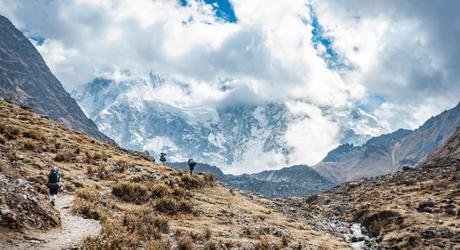 View of Salkantay Mountain
View of Salkantay Mountain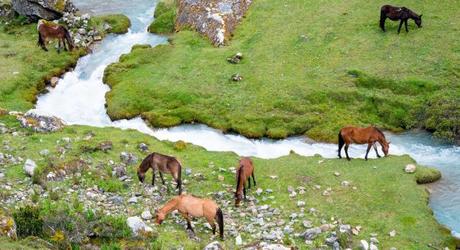 Andean landscape on the Salkantay Trek
Andean landscape on the Salkantay Trek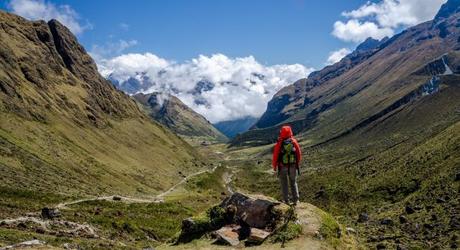 Scenic Views on the Salkantay Trek
Scenic Views on the Salkantay Trek
You begin with a transfer from Cusco to the town of Mollepata where the trek begins. Visit the panoramic Challacancha and Soraypampa sites before arriving at your campground of Pampas Salkantay. Then you marvel at the snow-capped peak of Salkantay Mountain as you hike up to the Salkantay pass. You will continue your descent and enter the Sacred Valley. Day four sees the pass through Lucmabamba and the Santa Teresa Valley. At Llactapata you stop and rest with a great view of the mountain of Machu Picchu before descending to the hydroelectric power station on the Urubamba River before taking the train to Machu Picchu Pueblo. On day five you visit the Machu Picchu ruins with a guided tour and then have time to explore the sacred citadel on your own. In the afternoon you return by train to Cusco.
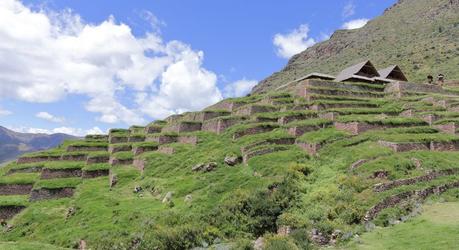 Huchuy Qosqo Trek to Machu Picchu
Huchuy Qosqo Trek to Machu Picchu
The second option is the Huchuy Qosqo Trek to Machu Picchu, an invigorating and magical hike to Machu Picchu. Pass by remote Andean villages, learn about the native flora and fauna and discover the fascinating Incan complex of Huchuy Qosqo. In the evening, ride the Expedition train to Machu Picchu Pueblo to spend the night before rising early the following morning to experience Machu Picchu. You will have a 2-hour guided tour of the ruins and then explore the sight on your own before returning by Vistadome train to Cusco.
Which is the best trek?
Of course the four-day Inca Trail is the best known and most popular. Whenever someone says: “I did the Inca Trail!” they mean that trek. However you may just fall in love the lesser-known Salkantay trek as well – it all depends on your preference and levels of fitness and comfort. This is, after all, YOUR Machu Picchu experience!
How long should I stay at Machu Picchu?
One night is enough since, except for the citadel, there isn’t much to do. Hence the entire area is viewed as a circuit. In Machu Picchu itself, most visitors will explore the citadel and we recommend entering again the next day to climb the mountain opposite the ruins, Wayna Picchu Mountain. Given the steep climb, this is only recommended for active traveler. Spend one night in Machu Picchu town because otherwise, the visit to Machu Picchu as a full day from Cusco or Sacred Valley can be too long.
What can I do in Machu Picchu?
Rise early to get the best views of the lost city from Wayna Picchu.
The Wayna Picchu mountain trail is steep but worthwhile with great birds-eye views of the lost city and the surrounding peaks of the Andes. Because of the narrow trail and popular demand, there are only two timings allowed for the climb which must be booked in advance. Rise early to get the best views before the heat and the crowds arrive! After the exertion of Wayna Picchu, take a second day to explore the famous ruins of Machu Picchu, deepening your impressions and gaining a richer understanding and appreciation of this amazing world wonder. Machu Picchu opens at 6 AM and the maximum independent time permitted at the ruins is four hours.
Hotels in Machu Picchu
 Belmond Sanctuary Lodge in Machu Picchu
Belmond Sanctuary Lodge in Machu Picchu Inkaterra Machu Picchu in Peru
Inkaterra Machu Picchu in Peru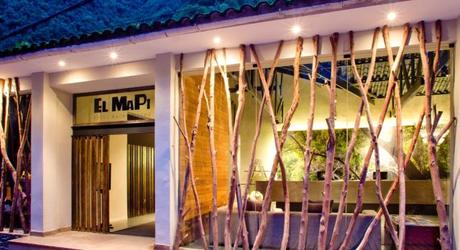 El Mapi in Machu Picchu
El Mapi in Machu Picchu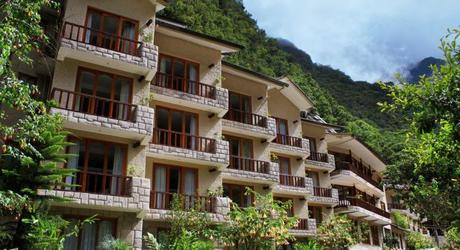 Sumaq Machu Picchu Hotel
Sumaq Machu Picchu Hotel
1. Belmond Sanctuary Lodge is the only hotel located next to the citadel. However, guests here don’t get special permission to stay longer or go inside earlier: the rules are the same for everyone. The advantage is that you don’t have to wake up so early to go into the citadel and you don’t have to take the bus from Machu Picchu Pueblo (the local and original name of the town is Aguas Calientes) to the citadel. Guests usually have to wait to take the bus. So, if convenience is a priority over all else, we recommend staying at the Sanctuary Lodge. Read more
2. Inkaterra Machu Picchu Hotel is in Aguas Calientes and it is surrounded by beautifully wild gardens and waterfalls, giving the impression of a lush wilderness. The individual whitewashed adobe casitas are tucked away in the cloud forest and the hotel is a member of National Geographic Unique Lodges of the World. Read more
3. Sumaq Machu Picchu Hotel is a newly renovated hotel located at the entrance of Aguas Calientes, with a view of the Vilcanota River. Expect excellent service and cuisine. Read more
4. El Mapi hotel is trendy and right in town with dozens of bars and restaurants on the hotel’s doorstep. The train station is less than a five minute walk away. It’s great for staying right in the heart of the action, but less ideal if you prefer a quiet stay. Read more
The mystical, magical Machu Picchu has been waiting for you for centuries so book your trip today for a guaranteed once-in-a-lifetime experience!
Read what our guests have to say about their Peru and South America tours.
Combine your Machu Picchu tour with a visit to Peru’s bustling capital Lima, the Amazon Basin, the floating islands of Lake Titicaca, gorgeous beaches and quaint Andean villages. Get in touch with us today for your tailor-made private vacation.
